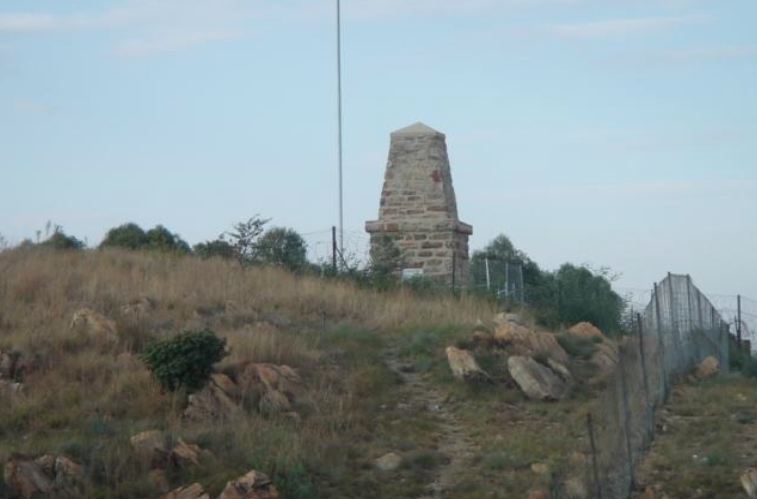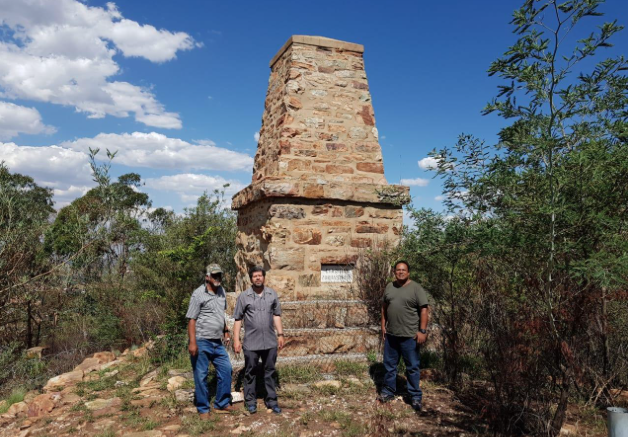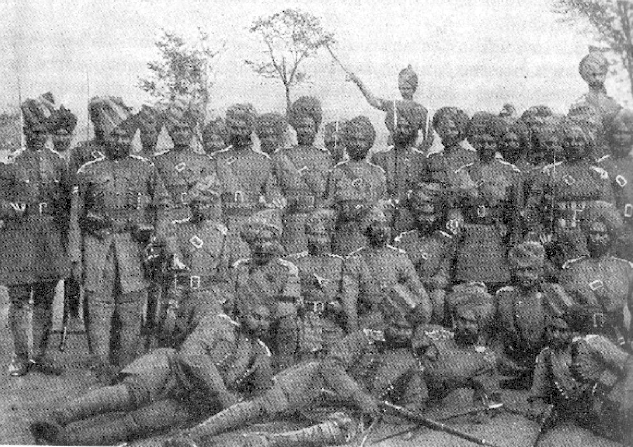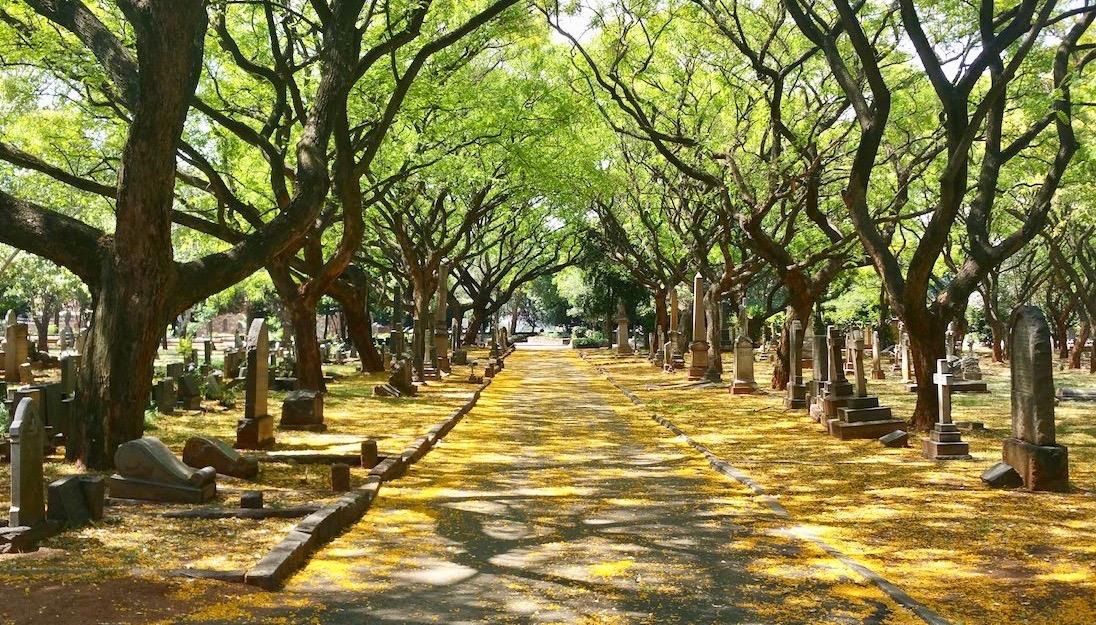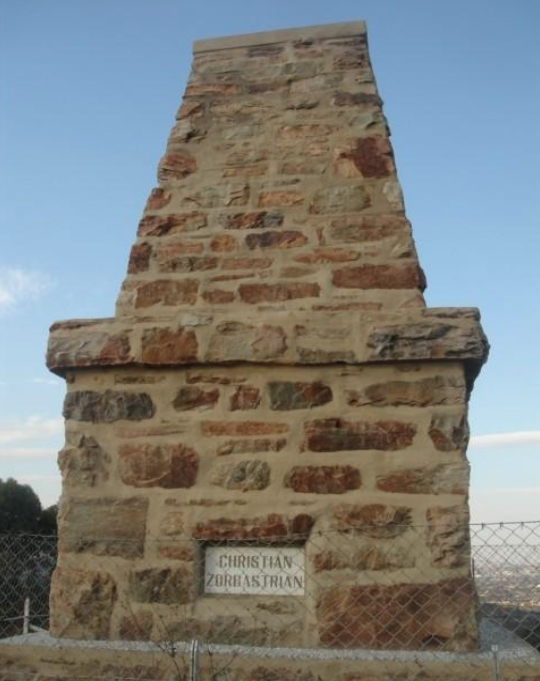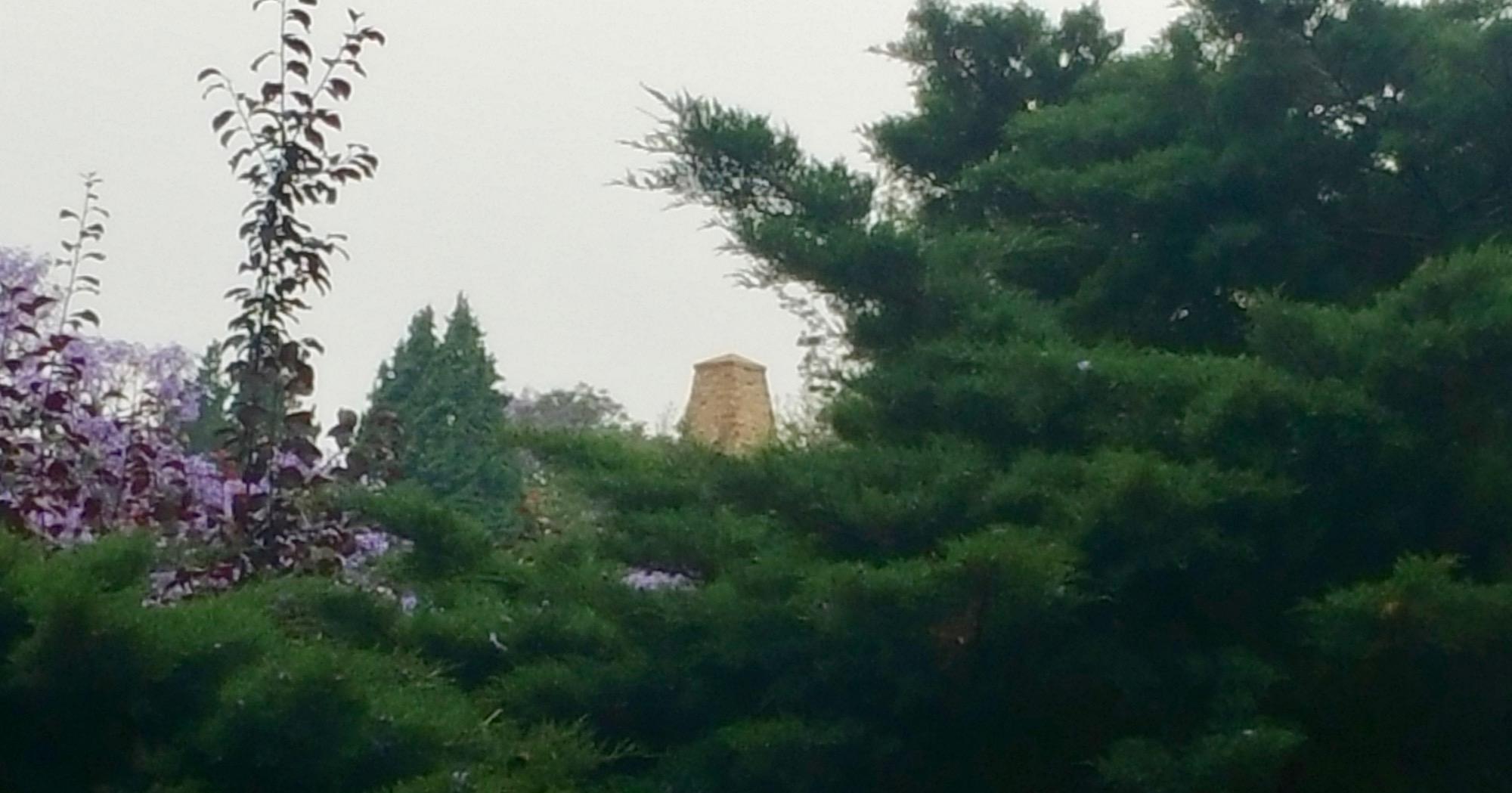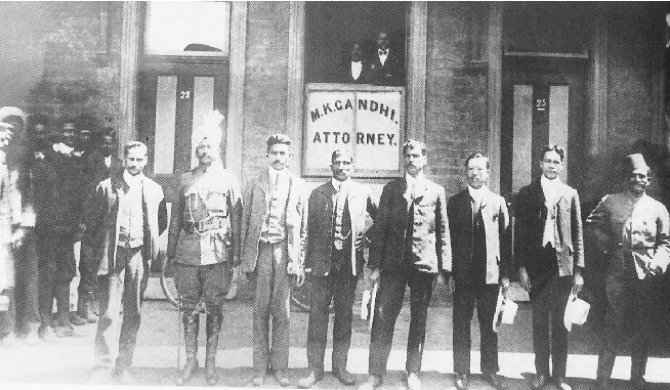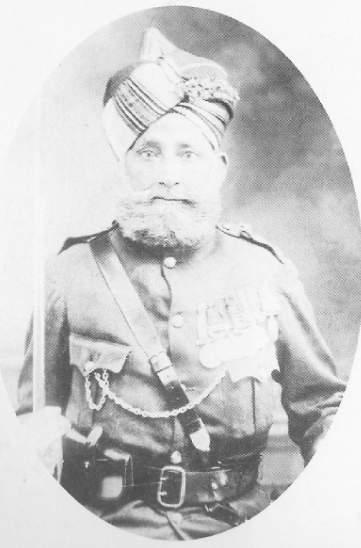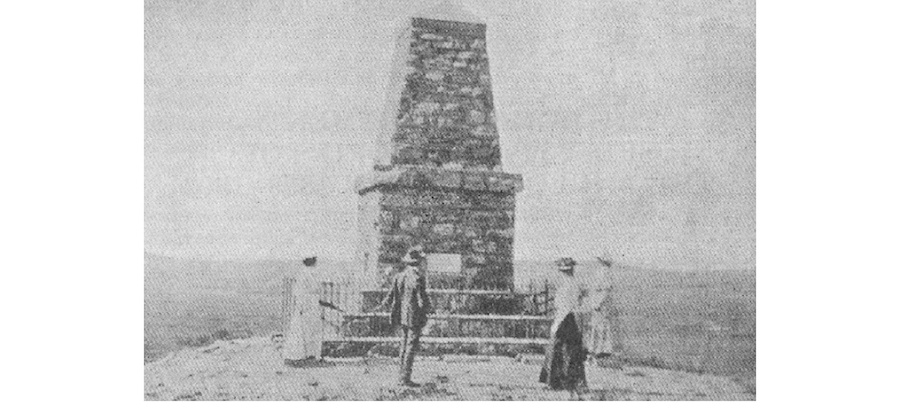
Disclaimer: Any views expressed by individuals and organisations are their own and do not in any way represent the views of The Heritage Portal. If you find any mistakes or historical inaccuracies, please contact the editor.
Forgotten men of the Indian Army left their imprint in Observatory, Johannesburg during the early 1900s. Although their story has been largely forgotten and lost to public memory, a monument at the summit of Observatory Ridge honours their memory. This Indian Monument stands as a memorial to Indians who fell in the Anglo-Boer War / South African War of 1899-1902, overlooking the valley where Indians served at a remount camp during the War. Erected soon after the end of hostilities, the Indian War Memorial was launched in the first flush of peace amidst a wave of enthusiasm and fanfare. Public interest and understanding of the monument then dissipated over much of the twentieth century.
More recently, the rise of revisionist accounts of the War has seen more inclusive representations of the conflict coming to the fore. Commemorations to mark the centenary of the Anglo-Boer War, held in 1999-2002, brought a flurry of publications and public events in which the experience of black people in the War, having long been ignored and suppressed, were highlighted as never before. Yet this first “inclusive” anniversary failed to raise the public profile of the Indian Monument, or to recover its meaning and significance.
The War Memorial takes the form of an obelisk of sandstone cut from the hill on which it stands. A tablet on the monument’s east side bears the inscription:
To the memory of British Officers
Natives
NCOs and Men
Veterinary Assistants
Nalbands
And Followers of the Indian Army
Who died in South Africa, 1899-1902
Indian War Memorial (City of Johannesburg)
Indians in the Boer War
These Indian men, although fully fledged troops of the Indian Army, were ordered to act in an ostensibly non-combatant role during the Anglo-Boer War, serving as “auxiliaries" or “followers“. The Johannesburg memorial raised in their honour has been noted as the only monument to non-combatants under military service who fell on foreign soil in this region. To the North, the monument overlooks the valley where Indians set up camp during the War, and where a group of their comrades were buried in the aftermath of the conflict.
Elsewhere, however, in the standard works and official histories issued after the War, the enormous contribution of “Native“ men of the Indian Army – many drawn from indigenous people of India – to the British war effort in South Africa is largely ignored. More recent histories have continued to tread these well-worn paths. The traditional view, for example, is echoed in a dictionary of the Boer War published in 1999. Under the entry for “Indians in the War”, the dictionary states: “Apart from the Indian Stretcher-bearer Corps [consisting of volunteers from Natal led by M.K Gandhi], there is no record of Indians having participated in the war as a group.” The author concedes only that “a few Indian officers of the Indian Army accompanied the British Army as observers but did not serve as combatants”.
As the Indian subcontinent was under British Rule, regiments of British Army provided a garrison there alongside the Indian Army from 1858. Although no Indian Army regiments took part in the Anglo-Boer War, volunteers from these regiments, referred to as “Indian Army auxiliaries”, participated in supportive roles. The regiments from the Indian subcontinent that were sent to fight in the Anglo-Boer War were regular (permanent) regiments of the British Army stationed in India.
The Indian Monument on Observatory Ridge in 2018 (Vinesh Selvan)
Whereas little information has been made known in South Africa about the role of the Indian Army auxiliaries during the Anglo-Boer War, the distinguished service of Gandhi and the Natal Indian Ambulance Corps has, by comparison, attracted much attention. Gandhi’s Ambulance Corps was, however, disbanded early in the War – at the end of February 1900 – when the British were able to take the offensive with large reinforcements and relieve the siege of Ladysmith. The Natal Indian Ambulances Corps numbering 1 100 men served for only two months, whereas the Indian Army auxiliaries were greater in number and many served throughout the War.
The centenary of the Anglo-Boer War was the first major commemoration of military heritage held nationwide in South Africa since the advent of democracy in 1994. For the ANC government this was an opportunity to foster interracial unity and reconciliation. One way of furthering this objective was to emphasise the shared involvement and suffering of Africans and Afrikaners in the War. Efforts at recovering African participation took center-stage in a new “inclusive” nationalist project to reconstruct a “South African War that belongs to all“. For the first time, the wartime experiences of Africans as family retainers, auxiliaries, soldiers and concentration camp victims were recognised in commemorations and new popular histories.
For all the many tours, events and celebrations held across the country, there was relatively little to recall the Indian contribution in the War. As part of this Nation-building centenary, not a single commemoration was held at the Indian Monument. Predictably, a number of tour operators revived the familiar figure of Gandhi. As expressed by Witz, Minkly and Rasool:
Under the heading “Indian Participation in the War”, the organisers of the centenary are also able to find a person of prominence to include in the war pantheon alongside Winston Churchill, Paul Kruger, Baden-Powell and Jan Smuts: the stretcher-bearer and spokesperson for the Indian merchant elite, Mohandas Gandhi.
The International Contingents
Far from being a purely South African conflict, the war of 1899-1902 soon became an international encounter, involving Canadians, Russians, American, Swedes and others. For all that, British troops drawn from the garrisons in India were greater in number than those of the foreign contingents from colonies such as Canada, Australia or New Zealand, with only the British homeland supplying more troops than India. Reinforcements from other British colonies or dominions comprised a combined total of 30 328 officers and men and 337 219 from Britain itself.
The garrisons in India contributed 17 950 British NCOs and men together with 584 officers (or a total of 18 534) not counting the large number of Native auxiliaries who were deployed to assist them in South Africa. Despite reluctance to use Natives of India at the beginning of the campaign, by the end of the War large numbers of these troops had been deployed in all theatres of the conflict, in Natal, the Orange Free State , and above all in the Transvaal.
Many accounts have been published on the role of contingents from Australia, Canada and other countries that took part in the Anglo-Boer War. Their sacrifices have inspired war memorials scattered throughout the world. Comparatively little research has, however, appeared on the Indian contingent which was the first to arrive after the outbreak of the war and became the largest of all the foreign forces brought in to reinforce the British garrison in South Africa. In general, the role of the Native Indian component of the Indian Army has often been neglected by researchers. The Indian scholar Dr T.G. Ramamurthi is, however, a notable exception, producing a little-known pioneering study.
As detailed by Ramamurthi, by the time hostilities ended thousands of Indian soldiers were deployed in South Africa in ostensibly non-combatant roles. Even though the War Office insisted and the Government of India faithfully instructed the Quarter-Master General in India that there should be “no Native followers”, the first contingent sent out from India, and which arrived in Natal in early October 1899, included over a thousand Natives. These included commissariat staff, veterinary and field hospital staff, as well as tindals and lascars of the Indian Ordinance Field Park.
According to a telegram dated 30 August 1899 from the Viceroy to the Secretary of State for India, the Indian contingent consisted of 5 635 British officers and men, 1 078 Natives, 2 334 horses and 611 mules and ponies. Most of the Indians were hospital workers, the Viceroy noted, though they also included grooms and private servants. The Indians' contingent brought with it medical units, with three complete field hospitals for British troops and one field hospital for their Indian followers.
Black Contributions in the War
Despite the reluctance of the British War Office to acknowledge the involvement of “Natives” (Indians) in what was officially a “White Man’s War”, more than three thousand Indian troops, including NCOs, were in South Africa on war duty by April 1900. According to a footnote in the Times History of the War in South Africa, India supplied more than seven thousand non-combatants in the course of the war.
From the outbreak of the conflict the two protagonists, the Boers and the British, claimed this as a “White Man’s War”. For many decades afterwards, historians cultivated the myth that the War was exclusively a white affair. This tide began to turn around the 1980s when Peter Warwick and others began to show how all sectors of the population were touched by the War. The thrust of this wave of research has been to recover the African (and to a lesser extent Coloured South African) experience of the War.
The Indian auxiliaries shared the fate of other “Non-Whites” who were drawn into the conflict, but whose contribution was ignored for many years. About eleven thousand African and coloured servants accompanied Boer Commandos, playing a role similar to the Indian auxiliaries, carrying out such tasks as looking after horses, cooking and guarding ammunition. It is only in more recent years that the role has been brought to light of those so-called Agterryers (mounted grooms or attendants) and other black participants who served on both the Boer and British sides. However, even such belated recognition has, for the most part, been denied to their Indian counterparts.
In the case of African involvement, few traces exist in the form of monuments or memorials from the past – an absence which did much to erase this aspect from public memory. In part, this absence is rooted in the nature of the society in which Africans found themselves, a measure of their subjection and the prejudiced attitudes of the time. As remarked by Curthbertson and Jeeves: “Public commemoration [of black contributions and experience in the War] would have seemed to whites, if any of them had thought about such a thing, as bizarre and irrelevant”.
Remount Camps
Indian auxiliaries were employed as hospital staff, horse trainers, transport drivers, cooks, water carries and laundrymen, and in other non-combatant roles. Though reluctant to bring in Native troops as combatants, the War Office made repeated requests for veterinary, health and equestrian establishments, leading to several Native contingents being dispatched to South Africa.
The breaking in and training of horses was among the main functions of the Indian auxiliaries, second only to stretcher-bearing. Faced by highly mobile Boer commandos on ponies, the later British campaigns under Lord Roberts were forced to rely increasingly on cavalry and especially on mounted infantry.
As recounted by Ramamurthi:
Field Marshal Lords Roberts, with his Indian experience, looked to India more than the Horse Guards Staff would have liked. When he realized that the fast-moving, quick-firing Boer commandos could be faced only by larger numbers of mounted infantry, he decided to call for trained horses from India, both to save time and to ensure that the horses were trained for the terrain involved. He asked for a large compliment of 2 000 horses, drawn from the Native Cavalry, and had no qualms over native establishments accompanying the horses. The Government of India could arrange on a priority basis only for 1 700 horses from the Native Calvary regiments and the Imperial Service Troops, which could meet Roberts’ specifications. These were accompanied by more than 350 Native personnel.
Syces (grooms for horses), nalbands and other Indian support staff at the Remount Depots helped keep the cavalry going, much as repair and serving facilities might do for mechanized divisions today.
Bengal Lancers at the Kroonstad Remount Camp. As shown here, some of the Indian forces carried arms, as they were part of the Indian Army. (Photograph: W.H. Wilson. After Pretoria, the Guerilla War, p. 282).
The Observatory Monument
By Ramamurthi’s calculation, more than nine thousand Natives of the Indian Army were eventually sent to South Africa during the three-year war, either accompanying British regiments or sent in separate Native corps. But the War Office preferred to ignore their presence officially, throughout the War and in the official histories.
Nevertheless, support for a monument near Johannesburg to hounour the Indian followers came from sympathetic British officers on the ground. Set in what would in 1903 become the suburb of Observatory, the monument was unveiled soon after peace was declared, with invitations going out to councilors and other dignitaries.
As recorded in Johannesburg Town Council minutes, guests were called to a ceremony below the ridge:
Captain J.C.C. Perkins, the native Officers, N.C.Os and men of the Indian detail request the pleasure of the President and members of the Johannesburg Municipality, their families and friends, to witness the unveiling of the Indian Monument at the Remount Depot, Bezuidenhout Valley, Johannesburg by Lieut-General the Hon. N.G. Lyttleton, K.C.B., commanding Transvaal and Orange River Colonies, at 3.45 p.m. on Friday 31st October 1902.
Funded by public subscription, with contributions from the local Indian community, the monument was unveiled in the first flush of victory, during the surge of patriotic feeling which followed the end of the War. For South Africa’s Indian community, accustomed to years of discrimination and contempt from the country’s white rulers, the monument was a rare acknowledgement of Indian dignity. As reported in The Star (1 November 1902), Indians from around the country greeted the monument with delight:
Telegrams have been received by the officer commanding Indian Details here from the Indian community, Cape Town, Hindu Siva Society, P.E., and the Indian community, Durban, expressing gratification at the appreciation shown for the valour and loyalty of the Indian soldiers by the erection of a memorial which they acknowledge gives further proof of a truly Imperial Spirit in the hearts of all subjects of His Majesty the King.
Adding further to the monument’s significance, the site was associated with Indians who formed part of the British force which occupied Johannesburg in 1900. Staffed mainly by an Indian detachment, a large Remount Depot was set up in Bezuidenhout Valley, beneath the ridge on which the monument would later be erected.
The Remount Depot in what became Bezuidenhout Park, where thousands of horses could be sheltered under corrugated iron roofs.
As many as four thousand horses could be accommodated by this central remount station in what become Bezuidenhout Park. Even in 1900 the location offered park-like surroundings, with large trees affording shelter for sick horses and for farriers at work. Natural springs also made it ideal for the purpose, providing a supply of water for both horses and men throughout the year.
Four unknown Muslims from the Remount Station were buried nearby in August 1902. The cause of their deaths is uncertain, through it is known that typhus claimed the lives of a number of Indian details in the area.
The four men were originally buried in a small cemetery on the east side of the present Bezuidenhout Park. In 1964 the remains of four men were exhumed when the municipality developed the park, with the Indian Cemetery making way for a protea garden. The remains were then taken to Braamfontein Cemetery for reburial, but with the Muslim section already full up, the Indians were placed in the “General Section” normally reserved for Whites.
Braamfontein Cemetery (The Heritage Portal)
The Observatory Monument commemorates not only those four, but also many of their countrymen who died on the battlefields of the Anglo-Boer War, their graves unmarked and unrecorded. Those who fell include Hindus, Sikhs, Christians and Zoroastrians (also known in India as Parsees), as well as Muslims. Specific mention is made on the monument of the men’s religious diversity. Small tablets on three sides of the obelisk are inscribed:
Christian – Zoroastrian
Hindu-Sikh
Mussulman
One of the small tablets (City of Johannesburg)
Many of the Indian auxiliaries – though not all – returned to India following the end of the War, never to form part of South African Society. In this sense, reviving their memory may not fit neatly within a narrow conception of South African nation-building. It remains, nonetheless, important to acknowledge the varied, multiracial and transnational elements which have shaped South African history. Actors in this complex and composite history include not only the South African mainstream, local minorities and immigrant populations, but also non-South Africans who came, left their mark as enduring presence on the historical landscape, and went from the country’s shores.
A glimpse of the memorial from below (The Heritage Portal)
Postscript
After the close of the South African War / Anglo-Boer War, at least a few of the Indian Army soldiers remained in South Africa, becoming absorbed into the Indian community and more broadly into the continuing stream of South African History.
Drawn from these veterans of the British Indian Army, Captain Nawab Khan and Sumander Khan were among those who participated in the seminal protest movement led by M.K. Gandhi in South Africa from 1906 to 1914.
Gandhi third from left, with Passive Resistance leaders in Johannesburg, 1908. Captain Nawab Khan, with turban, is on Gandhi’s right (Photograph: Transvaal Leader Weekly, 11 January 1908).
Captain Khan in later life. He died in 1939 aged eighty and is buried in Braamfontein cemetery
By January 1908, Captain Khan stood trial in Johannesburg along with a fellow ex-soldier Sumander Khan, a veteran of the Anglo-Boer War with thirty years’ service in the Indian Army. Accused of refusing to register under the Transvaal Asiatic Registration Act, the two were defended in court by M.K. Gandhi in his role as an attorney.
On 3 January, Gandhi began his examination of Nawab Khan by establishing the military credentials of the accused:
Gandhi: You are a Jamadar?
Accused: Yes.
Gandhi: You came to Transvaal at the time of the War?
Accused: Yes, during the War
Gandhi: Attached to the transport corps?
Accused: Yes.
Gandhi: What expeditions have you served in?
Accused: Burma, Chitral, Black Hill, Tirah Expedition (1897) and the Transvaal War.
Gandhi: And you were wounded three times?
Accused: Twice I was shot and once I was cut over the eye.
Gandhi: Your Father was attached to Lord Roberts’s staff when he went to Kandahar?
Accused: Yes, he was Subadar Major.
A prominent resistance figure, Captain Khan brought a long military tradition to Gandhi’s non-violent Satyagraha (“Truth Force”) movement of the early 1900s. The son of a major killed in the second Afghan War, Khan joined the Indian Army at the age of thirteen. His campaigns included the first Sudan War of 1882-1883, Burma (1885-1893), the Chitral Frontier (1893-1896), the Anglo-Boer War (1899-1902), and Zulu Bambatha Rebellion of 1906. As a result of his leading role in the Satyagraha movement, Captain Khan lost his grant of land and his military pension was terminated.
About the author: Eric Itzkin is Deputy Director: Immovable Heritage in the City of Johannesburg. An earlier version of this article was published in Historia, vol.54, no.1, 2009.
Main image: Johannesburg’s first war memorial: the Indian Monument dates from 1902. (Photograph: Joseph Doke, Gandhi: an Indian patriot in South Africa, London Indian Chronicle, 1909.
Click here to download a word version of the article containing footnotes (+- 4mb).
Comments will load below. If for any reason none appear click here for some troubleshooting tips. If you would like to post a comment and need instructions click here.

